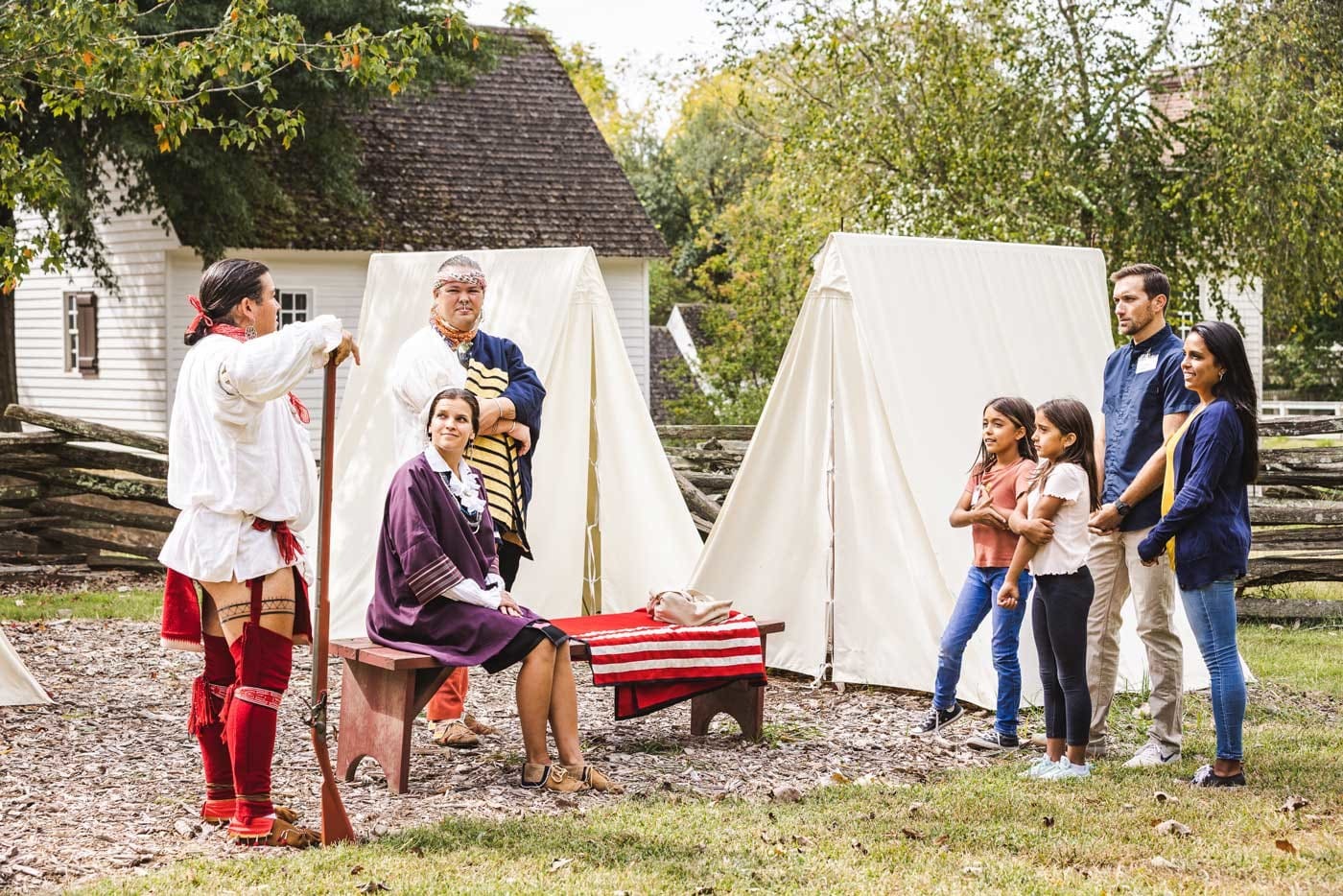Spend Turkey Day where the pilgrims did and mix historic sites and festivals with your cranberry sauce and stuffing.
While it is commonly accepted that New Englanders held the first Thanksgiving, many actually contend Thanksgiving in English-speaking America took place in Virginia, at Berkeley Plantation, more than a year before the Mayflower set sail for Plymouth. Records show that Captain John Woodlief led his crew and passengers from their ship to a grassy slope here along the James River for the New World’s first Thanksgiving service. Once they disembarked, in accordance with rules laid out by their British company expedition sponsor, the English colonists knelt down and prayed. The date was December 4, 1619.
Today on the site where Woodlief knelt, a gazebo contains the following words: “Wee ordaine that the day of our ships arrival at the place assigned for plantacon in the land of Virginia shall be yearly and perpetually kept holy as a day of Thanksgiving to Almighty God.” While the plantation holds an annual Thanksgiving Festival during the first week of November, visitors can tour this fascinating historic home in Charles City year round.

Throughout the month of November, Colonial Williamsburg features special programming to learn more about American Indians in 18th-century Williamsburg, where they were a regular and frequent presence. There were local “tributary” tribes, who were considered subjects of Great Britain by the 18th century, such as the Pamunkey, Mattoponi, and Chickahominy. And there were “foreign” Indian tribes who had a nation to nation relationship with Great Britain, such as the Shawnee and Cherokee, who would come to Williamsburg to discuss treaties with the Royal government of Virginia. These diverse native nations had an influence on American culture, democracy, and its struggle for independence. The explorations of these American Indian nations and their role in our collective story then and now is essential in understanding modern American life.
At a special event on Thanksgiving Day, visitors can hear from President George Washington himself during a special reenactment event. Following a resolution of Congress on October 3, 1789, Washington proclaimed Thursday, November 26, 1789, a day of “public thanksgiving and prayer” devoted to “the service of that great and glorious Being who is the beneficent Author of all the good that was, that is, or that will be.” In setting aside a day for Thanksgiving, Washington established a non-sectarian tone for these devotions. It stressed political, moral, and intellectual blessings that make self-government possible and personal and national repentance.
History-lovers will also want to book a traditional Thanksgiving dinner at one of the historic taverns, such as Christiana Campbell’s Tavern or the King’s Arms.

Plymouth, Massachusetts is one of the most visited places in New England, especially in the fall. Located where the Pilgrims first settled back in the 1600s, many of the town’s historic sites have been wonderfully preserved or restored. Plymouth hosts several special holiday events during the weekend before and on Thanksgiving day. This year’s festivities include a harvest market, historic village and living historians, children’s activities and food trucks, Plymouth Philharmonic concert, as well as American’s only historically-accurate chronological parade.
On the day of Thanksgiving, the town puts on “Pilgrim Progress,” a reenactment of the Pilgrims’ Sabbath procession to worship. Costumed participants representing survivors of the winter of 1621, assemble to the beat of a drum, proceed down North Street, along Water Street past Plymouth Rock, up Leyden Street to School Street where a short Pilgrim worship service is observed near the site of the original fort/meetinghouse. Psalms sung are taken from The Book of Psalms by Henry Ainsworth, used by the Pilgrims in Holland and in Plymouth. Passages read by “Elder Brewster” are from Governor Bradford’s Of Plymouth Plantation or other sources. After the service, the march continues through town on Main Street, ending at the Mayflower Society House via North Street.
Then at noon, the National Day of Mourning March and Ceremonies are held at the Massosoit Statue. Since 1970, Native Americans and their supporters have marched to Plymouth’s Town Square and then gathered on Cole’s Hil. Organized by United American Indians of New England (UAINE), the march has brought about revisions in the depiction of United States history and government as well as settler relationships with Native American peoples. A day of remembrance and spiritual connection, the annual event is held to create a renewed appreciation for Native American culture, and to protest the treatment of American Indians.
